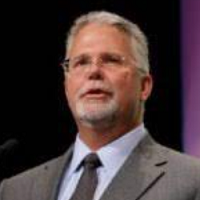 By Bill Paschall, VP of Business Development, Vivify Health
By Bill Paschall, VP of Business Development, Vivify Health
Twitter: @VivifyHealth
The FCC announced $249.95M in new funding for the COVID-19 Telehealth Program, with costs covered up to 12 months. The good news is RPM platforms and services are eligible for funding.
With this new cash infusion, Congress also provided additional direction to the FCC, including new metrics to evaluate applications. This update is particularly beneficial for providers who did not receive Round 1 support and others who were significantly challenged by COVID-19, including tribal, rural, and low-income communities.
The Round 2 application filing window opens at noon ET on Thursday, April 29, 2021, and closes at noon ET on Thursday, May 6, 2021. Round 1 applicants who were not funded must submit a new application. According to the Commission’s March 30, 2021, Report and Order and Order on Reconsideration, at least one applicant in each state and the District of Columbia will receive funding “to the extent feasible.”
Round 2 funding overview
The Consolidated Appropriations Act (CAA), 2021, passed on December 27, 2020, provides the Commission with additional funding for the COVID-19 Telehealth Program. The Program will consider funding for telecommunication services, information services, and devices necessary to provide critical connected care services in response to the COVID-19 pandemic.
The COVID-19 Telehealth Program, appropriated by Congress as part of the Coronavirus Aid, Relief, and Economic Security (CARES) Act, initially granted $200 million in funding to healthcare providers during the pandemic to cover the cost of “connected care services to patients at home or in mobile locations.”
How does the Commission define connected care services? According to the First COVID-19 Report and Order, connected care services are a subset of telehealth that use “broadband Internet access service-enabled technologies to deliver remote medical, diagnostic, patient-centered, and treatment-related services directly to patients outside of traditional brick and mortar medical facilities, including specifically to patients at their mobile location or residence.”
Examples of eligible services and devices include:
- Telecommunications Services and Broadband Connectivity Services: Voice services and Internet connectivity services for healthcare providers or their patients.
- Information Services: RPM platforms and services; patient-reported outcome platforms; store and forward services, such as asynchronous transfer of patient images and data for interpretation by a physician; and platforms and services to provide synchronous video consultation.
- Connected Devices: Tablets, smartphones, or connected devices that provide telehealth services (e.g., broadband, Wi-Fi, or Bluetooth enabled blood pressure monitors and pulse-oximeters) for patient or healthcare provider use; and telemedicine kiosks/carts for healthcare provider site.
Funding priority will go to eligible non-profit and public healthcare providers per section 254(h)(7)(B) of the Communications Act, including those that fall within the following eight categories:
- Post-secondary educational institutions offering healthcare instruction, teaching hospitals, and medical schools
- Community health centers (FQHC) or health centers providing healthcare to migrants
- Local health departments or agencies
- Community mental health centers
- Not-for-profit hospitals; Critical Access Hospitals (CAH)
- Rural health clinics (RHC)
- Skilled nursing facilities (SNF)
- Consortia of healthcare providers consisting of one or more entities falling into the first seven categories.
Tips for getting funded
It’s important to know that Round 2 application metrics will consider COVID-19 Telehealth Program performance goals. Eligible healthcare providers who stand to benefit the most from telehealth funding will receive higher priority. Round 2 funding will go to as many providers as is possible (thus, the $1 million cap per application).
Additionally, tribal, rural, and low-income communities, and applicants in areas hardest hit by the COVID-19 pandemic, will receive top consideration.
Round 2 evaluation metrics include 9 factors, with applicants receiving 5-15 points per factor on their application. Factors include applicants operating in a hardest hit or low-income area, a Round 1 unfunded applicant, tribal community, CAH, FQHC, and a healthcare provider shortage area.
When making a funding request, healthcare organizations will need to include the category, the telecommunications services, information services, or connected “devices necessary to enable the provision of telehealth services” being requested (along with quantities), the cost for each service or connected device, and the total amount of funding requested. Be sure to include supporting documentation, such as an invoice or a quote from a vendor or service provider (or similar information).
What’s the best way to ensure a quick review of your application? Be specific and include enough details to identify both the eligibility and cost of each line item.
Key action steps
There are four steps interested providers can take immediately to prepare to apply for the Program:
- Determine eligibility by reviewing the eight eligible provider categories
- Obtain an eligibility determination from the Universal Service Administrative Company (USAC): Form 460. All applicants must have a healthcare provider number (HCP Number) assigned to them by USAC at the beginning of the FCC Form 460 application process before they can submit their application. Contact USAC for specific questions about eligibility and completing the eligibility form: (800) 453-1546 or via email: RHC-Assist@usac.org
- Get an FCC Registration Number (FRN) required of all applicants doing business with the Commission.
- Register with the System for Award Management (SAM), which provides the FCC with an authoritative source for information necessary to provide funding to applicants and ensure accurate reporting.
This article was originally published on Vivify Health and is republished here with permission.
